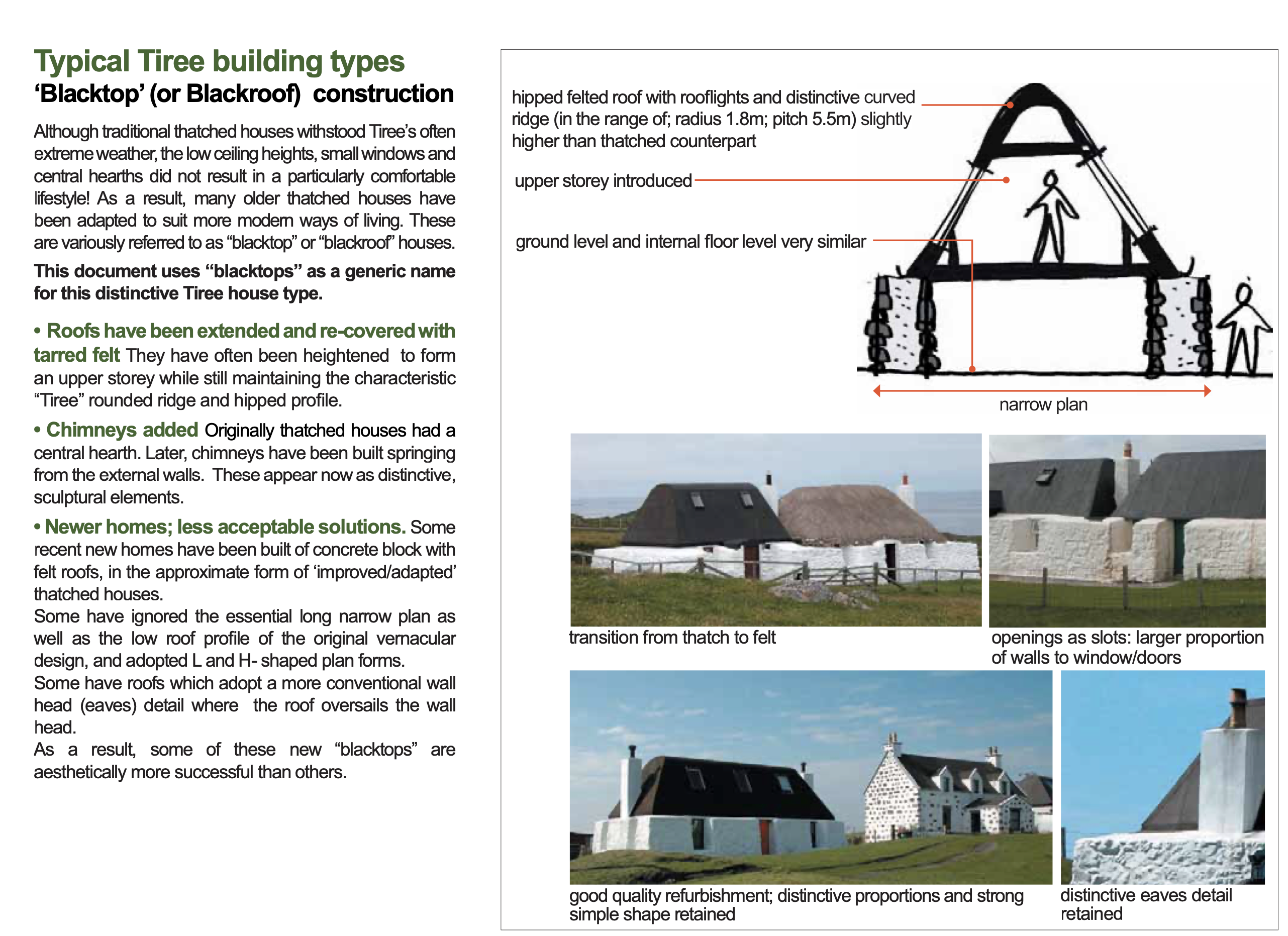Climatic Design, example 1.
The spotted house - Tiree, Inner Hebrides
Https://commons.wikimedia.org/wiki/File:Tiree,_spotted_house.jpg
This extraordinary island, the weather, the landscape, the history and this building reminds me that a good building always reflects the natural environment. We easily think that vernacular architecture has to be good, the human working in nature always shows the way how to build. This is not always true. There are vernacular examples that have made residents sick. In this case, it is almost inevitable that everyday life, costs, sometimes strict religious rules are contrary to better and healthier solutions.
The up-to-date construction technology and new materials make a huge impact on our homes. I will be back to it at the next post. (Working title: Sick building syndrome - and the changes from the ‘70ies)
The basics of good Climatic Design - see the 5 elements below - did not change in the last few hundred years, it always reflects the place.
In the nordic area, the harsh winters (cold, wind, snow) needs better insulation, thermal mass, windproof structures. In this island - Tiree is on the Inner Hebrides - the main natural element is the wind rushing over the flat surfaces. The main building material resources are stone, earth, sand, seagrass, and sometimes other materials landed from the water.
The “Shape of the building” reflects this: simple layout, massive very thick 3 layers stone/detritus/stone walls are rounded on the edges. The upside-down boat shape of the roof helps to minimize the turbulent effect of the 100 mph wind.
The “Fenestration” in this case means small size windows, deep windowsills, small plank doors.
Using solar energy as “Solar control” on this island means that you have to position the windows and the door facing to South to catch the sun. The deep windowsills and the entrance area is painted to white with limewash for better reflection to the inside through the small sized windows. The dark spots on the wall - the local stones - helps to catch solar energy and provide solar heat for the wall to dry out after morning rains.
Regarding “Building materials” stone provides huge thermal mass as heat storage, the average outside temperature does not vary hugely between summer and winter, wind and the lack of sunshine make the difference. As every material - outside the stone, sand and grass - comes by cargoships, reusing of the old building elements are very common.
“Ventilation” iN hot climates are crucial, but here the ventilation is well provided by the wind. The stone chimneys also help the airflow inside the building.
I do not mean that life was super easy and comfortable for the locals, but they had the tools to make life. The stone walls provide shelter, the landscape and the wide view made every day enjoyable.
I find some good background materials on Tiree houses.

https://en.wikipedia.org/wiki/Tiree
https://books.google.hu/books?id=fe2oDwAAQBAJ&pg=PT34&lpg=PT34&dq=tiree+vernacular&source=bl&ots=bZTsz_1FiS&sig=ACfU3U3yo98gsw_k2ajFJ9LzlR5p2QIdLA&hl=hu&sa=X&ved=2ahUKEwj-hYu2oMLpAhUCBhAIHWw6AZEQ6AEwCnoECAoQAQ#v=onepage&q=tiree%20vernacular&f=false